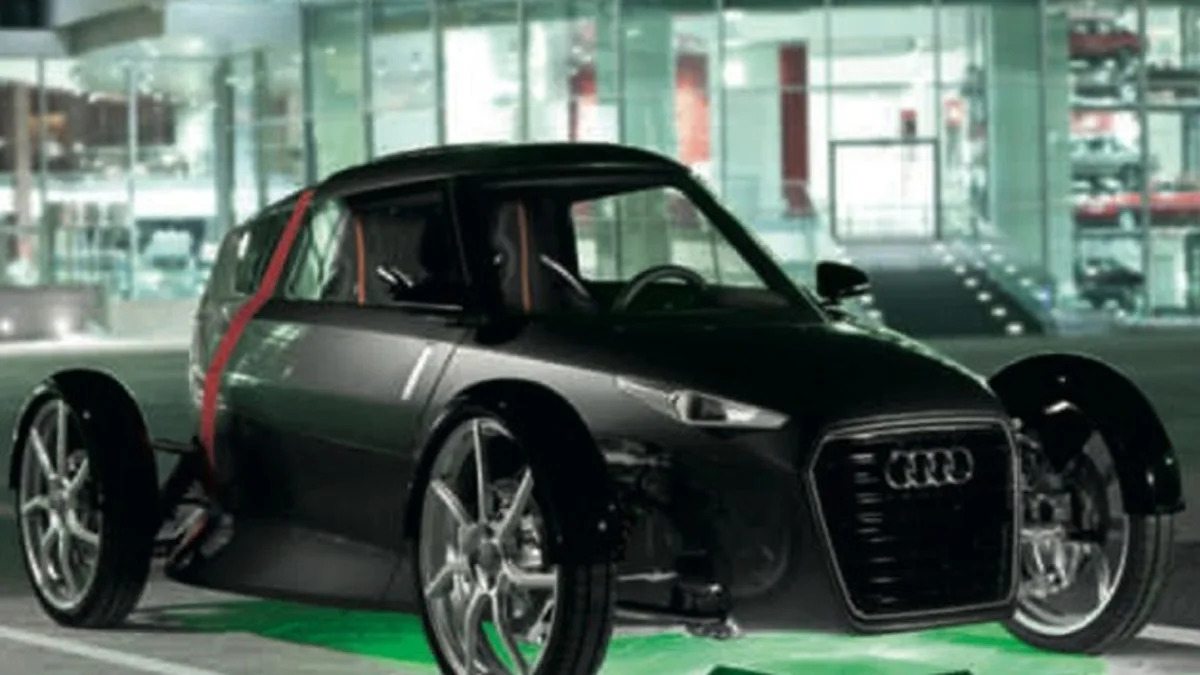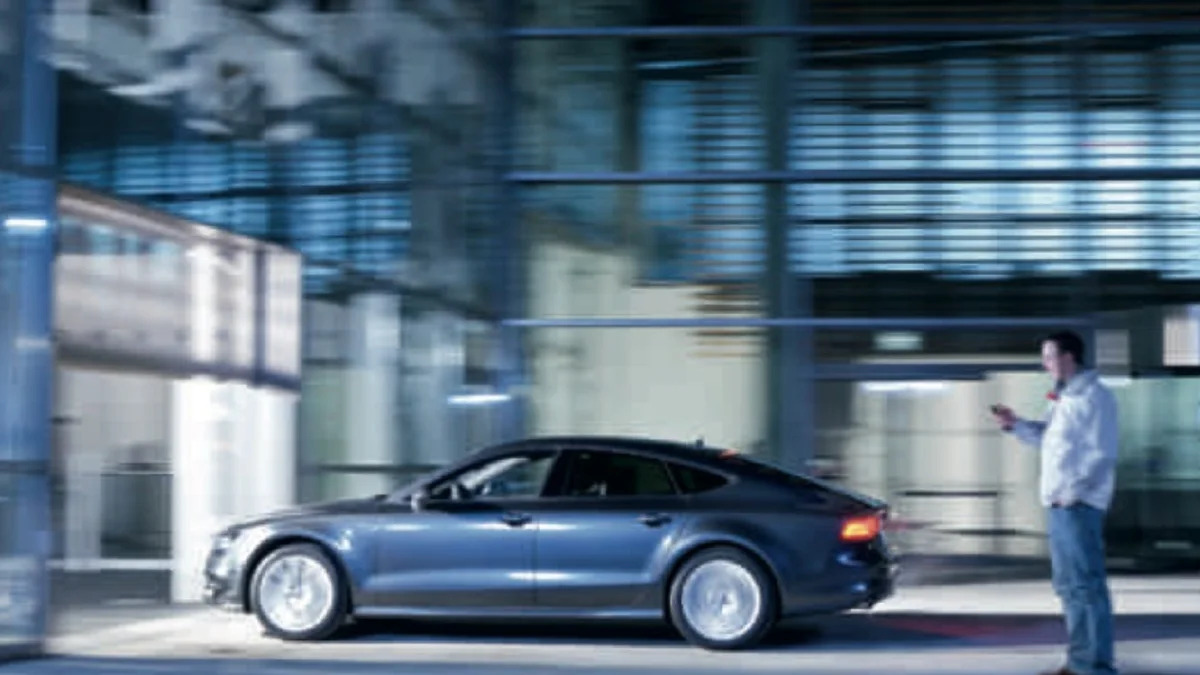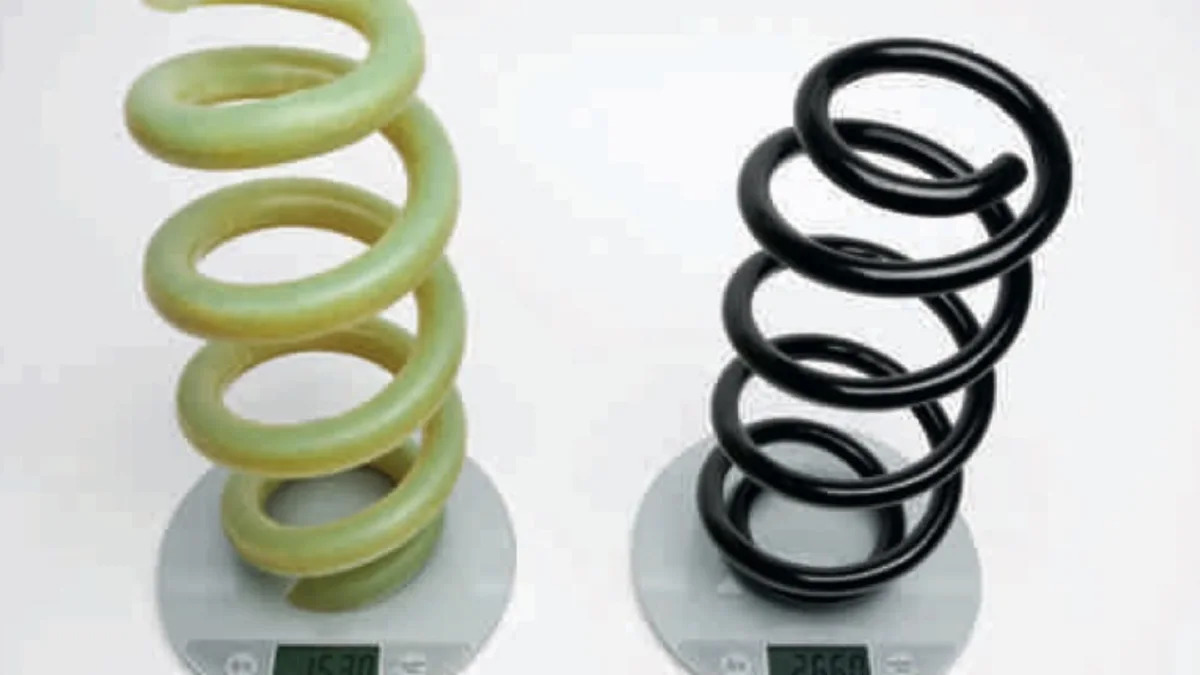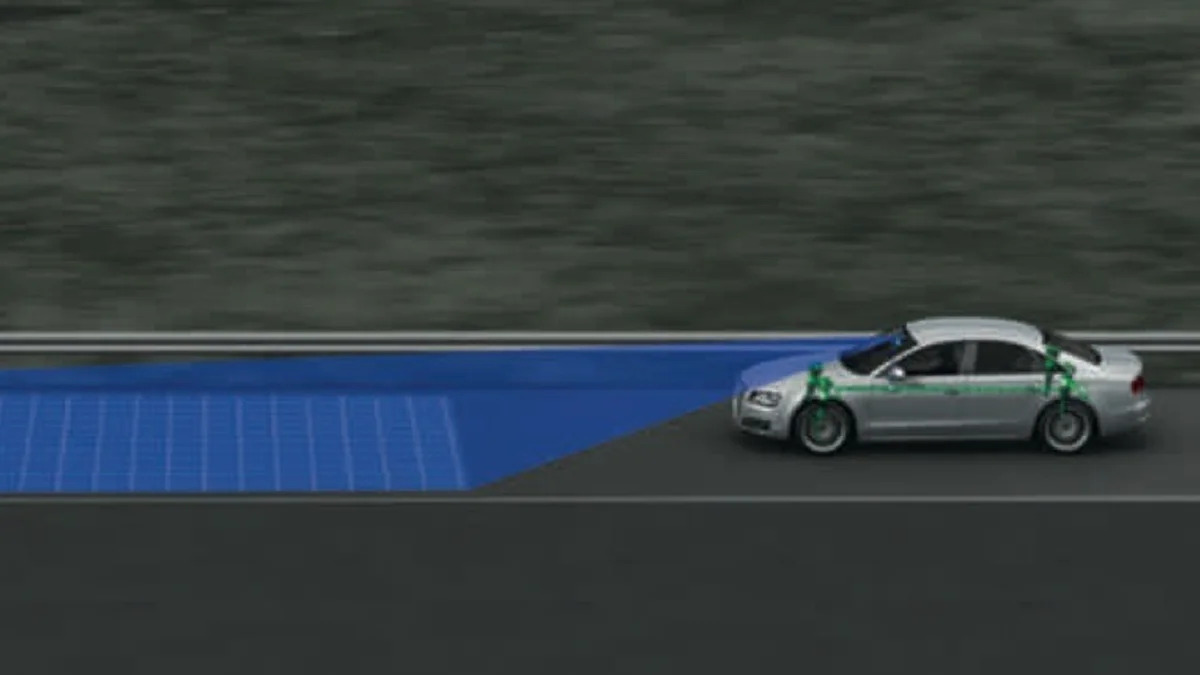Seven New Technologies From Audi
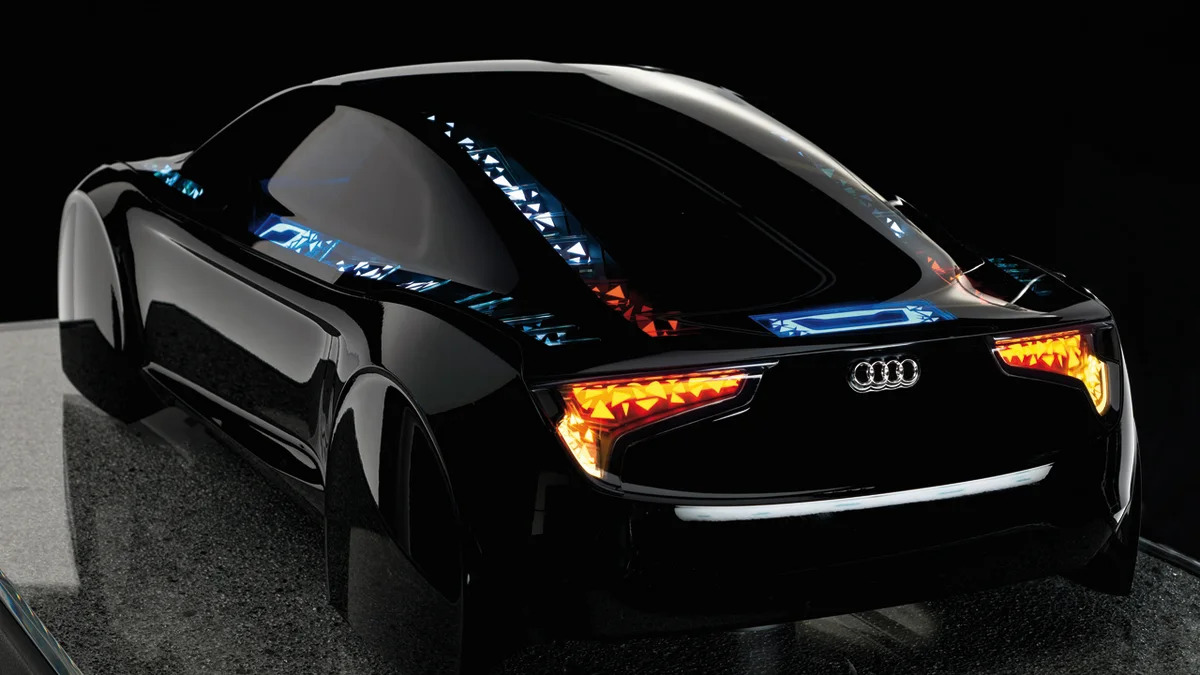
-

-
- Audi Wireless Charging
Audi Wireless Charging
Audi is still at least a year away from bringing a fully electric model to market, and like every automaker pursuing EVs, charging is a major component.
To that end, Audi – like Nissan, GM and others – is patterning with WiTricity Corporation from Boston, which manufacturers a coil-based inductive charging system that utilizes one coil installed in the ground and tapping into the grid, with another coil mounted underneath the vehicle. Alternating current in the embedded coil creates an alternating magnetic field that flows through the air and sends the voltage to the car-mounted coil. It can be mounted anywhere and according to Audi isn't just safe, but the system isn't affected by rain, snow or ice.
ETA: Two to three years.
-
- Garage Parking Pilot
Garage Parking Pilot
When the vehicle reaches the entrance of the garage, the local wireless network detects the car's arrival and a "digital thread" allows the driver to take his or her hands off the wheel and the be autonomously piloted directly to his space. Vehicle-to-vehicle networking should ensure collisions aren't an issue, and when you're done dining or catching a flick, you simply open an app on your smartphone to have your car waiting for you at the entrance.
ETA: It's all about infrastructure, so figure a decade or more.
-
- OLED Technology
OLED Technology
Long story short, OLEDs are incredibly light, very flexible and can produce millions of colors in a variety of intensities when stacked together. Not only that, but they're just as efficient – if not more so – than standard LEDs.
Audi plans to use OLEDs in everything from side markers to interior lights, and could even provide drivers following another car information about that vehicle's speed and braking.
ETA: Two years.
-
- FRP Coil Springs
FRP Coil Springs
Reducing unsprung mass improves both handling and ride comfort, so anything that can be done to remove weight from within the wheel arches is worth exploring. And one area that hasn't seen much innovation is the standard coil spring.
That's about to change with the introduction of the fiberglass reinforced plastic (FRP) spring, which replaces the usual steel springs for a weight savings of more than 40 percent.
Audi is developing a technique for creating these FRP springs that involves a fiberglass helix baked together with an epoxy resin, followed by a metal alloy wire that's woven into the spring. The process is actually quicker than the traditional method of creating a steel spring and the result isn't just a lighter spring, but a stronger one.
ETA: The first application will be in the 2012 Audi R8 e-tron, with mass adoption coming the following year.
-
- Predictive Suspension
Predictive Suspension
Mercedes-Benz gave us a taste of this technology last year utilizing a series of cameras and lasers to detect the road surfaces ahead and then adjust the suspension to soak up the ruts and bumps.
Audi won't be left behind and plans to utilize a similar camera-based system that will subtly alter the adaptive dampers by scanning the road 20 meters ahead. In addition to a stereo camera mounted ahead of the rearview mirror, Audi plans to incorporate "photo-mixed detectors" (PMD) that rely on both radar and laser systems.
ETA: Same as the new Multitouch system, we expect this adaptive suspension to arrive in the next A8.
